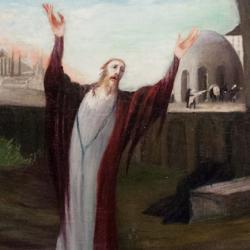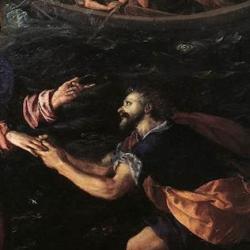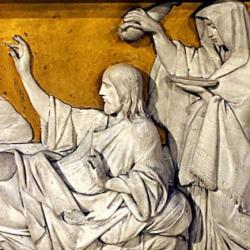INTRODUCTION
Along with Paul (1 Corinthians 15:4), we confess Jesus’ burial as an essential part of the gospel. What does the burial of Jesus add to His death and resurrection?
THE TEXT
“And many women who followed Jesus from Galilee, ministering to Him, were there looking on from afar, among whom were Mary Magdalene, Mary the mother of James and Joses, and the mother of Zebedee’s sons . . . .” (Matthew 27:55-66).
MANY WOMEN
In Psalm 22, David is surrounded by raging bulls, dogs, and lions (vv. 11-21), but when the Lord hears his prayer, that bestial community is replaced by a company of brothers, the seed of Israel (vv. 22-23). During His trial and sufferings, Jesus is surrounded by raging Jewish leaders, the mob clamoring for a cross, scornful Roman soldiers, but at His death that changes. Roman soldiers confess He is the Son of God (Matthew 27:54) and women watch at the cross and the tomb (vv. 55-56, 61; cf. 28:1-8). Women have been in the background of Matthew’s gospel (14:21; 15:38; but cf. 9:20-22; 15:21-28; 26:6-13), but now they come to the forefront. In Matthew’s account, James and John are not at the cross, but their mother has followed Jesus there to serve Him (27:56), ironically enough given her earlier ambitions for her sons (20:20). Jesus reconstitutes an Israel in which there is neither “male nor female” (Galatians 3:28).
THE RICH DISCIPLE
Earlier in Matthew, Jesus commented on the difficulty of a rich man entering the kingdom (19:16-24), but at His burial a rich man comes forward to offer a tomb (27:57). As Isaiah predicted, the Servant who suffers alongside transgressors is with a rich man in His death (Isaiah 53:9). Receiving permission from Pilate, Joseph personally prepares Jesus’ body and lays it in the tomb, and rolls a large stone in front (vv. 58-60). Jesus has already broken rocks and opened tombs by His death (vv. 51-52), so it’s unlikely that this tomb will hold Him. The last time the names Jesus, Joseph and Mary appeared, the Father delivered the infant Jesus from death at the hands of Herod (Matthew 1-2). A Joseph and several Marys reappear at the tomb, and the Father is again going to call His Son from Egypt.
SEAL ON THE TOMB
No disciples sit waiting at the tomb of Jesus. The priests and Pharisees take Jesus’ prophecy of resurrection seriously, more seriously than the disciples (Matthew 27:63-64). They gather before Pilate (v. 62), as they had gathered before him in his court (27:17), forming an infernal “synagogue.” Their professed desire to avoid deception and fraud (v. 64) is ironically overturned later when they themselves perpetuate a false report about the resurrection (28:11-15). Pilate is in form. “You see to it,” he said during the trial, foisting responsibility onto the Jewish leaders (27:24). He does the same here: “You have a guard,” adding, as if he knows it won’t work, “make it as secure as you know how” (v. 65).
BURIALS AND RESURRECTIONS
The Jewish leaders want the dead to stay dead. They want to maintain the status quo. Killing and burying is the extent of human power. If tombs are going to be opened, God is going to have to do it. And He has; He does.











